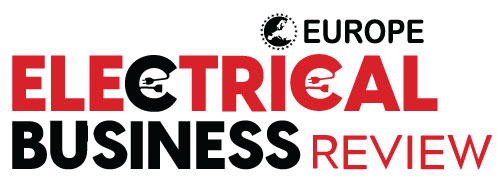Thank you for Subscribing to Electrical Business Review Weekly Brief
I agree We use cookies on this website to enhance your user experience. By clicking any link on this page you are giving your consent for us to set cookies. More info
Overcoming Challenges: Accelerating the Adoption of Electric Vehicles
Electric vehicles (EVs) are gaining momentum as a sustainable transportation solution, offering a cleaner and greener alternative to traditional internal combustion engine vehicles.

By
Electrical Business Review | Monday, January 13, 2025
Stay ahead of the industry with exclusive feature stories on the top companies, expert insights and the latest news delivered straight to your inbox. Subscribe today.
While electric vehicles hold great promise for a sustainable transportation future, several obstacles must be overcome to accelerate their adoption.
FREMONT, CA: Electric vehicles (EVs) are gaining momentum as a sustainable transportation solution, offering a cleaner and greener alternative to traditional internal combustion engine vehicles. However, despite their numerous advantages, challenges must be overcome to accelerate the widespread adoption of electric vehicles. In this article, we will study some key hurdles and discuss strategies to overcome them, ushering in an era of electric mobility.
1. Range Anxiety and Charging Infrastructure:
Range anxiety, the fear of getting low battery power, is a major concern for potential EV buyers. Addressing this issue requires an extensive and well-planned charging infrastructure network. Governments, utility companies, and private investors must collaborate to expand the availability of charging stations, especially in residential areas, workplaces, and public spaces. Investing in fast-charging technologies and establishing a comprehensive network of charging stations will alleviate range anxiety and increase consumer confidence in EVs.
2. Affordability and Incentives:
The initial cost of purchasing an electric vehicle is often higher than traditional vehicles. While the long-term operating costs are lower, this initial barrier can deter many potential buyers. Governments and policymakers can play a key role in making electric vehicles more affordable through financial incentives, such as tax credits or rebates. These incentives can help bridge the price gap and encourage more consumers to switch to EVs.
3. Battery Technology and Charging Speed:
Continued advancements in battery technology are essential to enhance the range, charging speed, and overall performance of electric vehicles. Research and development efforts must improve battery capacity and reduce charging times. Breakthroughs in solid-state battery technology and integrating artificial intelligence into charging infrastructure can accelerate charging speeds and make EV charging more convenient and efficient.
4. Consumer Education and Awareness:
Many consumers still have limited knowledge and misconceptions about electric vehicles. Educating the public about the advantages of EVs, such as reduced emissions and lower maintenance costs, is crucial in dispelling myths and fostering positive attitudes towards electric mobility. Awareness campaigns test-drive events, and partnerships between automakers and local communities can help raise awareness and provide firsthand experiences with electric vehicles.
5. Grid Capacity and Smart Charging:
The widespread adoption of electric vehicles challenges the electric grid's capacity. To accommodate the increased demand for electricity, utilities must invest in grid modernization and smart charging solutions. Smart charging technologies can optimize charging times, leveraging renewable energy sources and avoiding strain on the grid during peak demand periods. Integrating EVs into a smart grid ecosystem will ensure a seamless and sustainable charging experience.
Conclusion:
While electric vehicles hold great promise for a sustainable transportation future, several obstacles must be overcome to accelerate their adoption. Addressing range anxiety through a robust charging infrastructure, making EVs more affordable through incentives, advancing battery technology, increasing consumer and optimizing the electric grid are critical steps in driving the widespread adoption of electric vehicles. Collaborative efforts among governments, policymakers, automakers, utility companies, and consumers are vital to overcoming these challenges and transitioning towards a cleaner, greener, and more sustainable transportation ecosystem powered by electric mobility.








